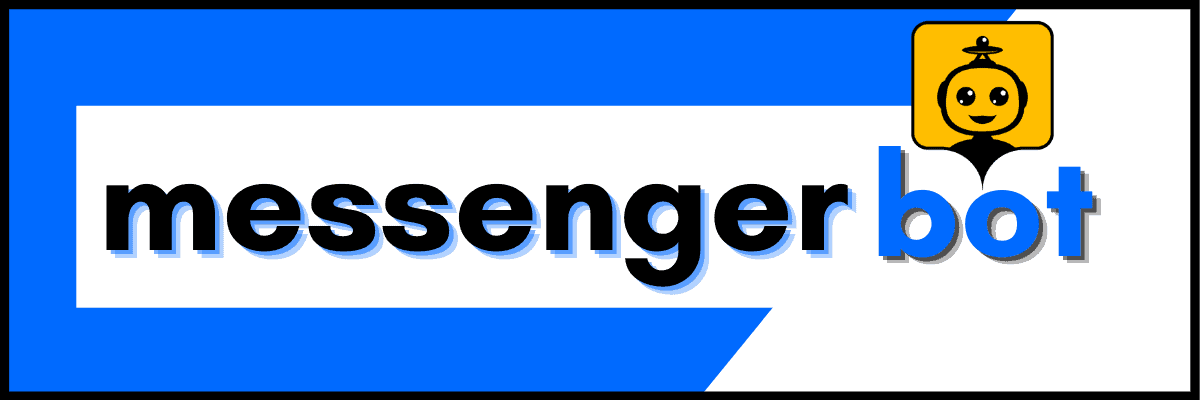Key Takeaways
- Understanding chatbot metrics is essential for optimizing customer engagement and improving operational efficiency in 2025.
- Key performance indicators (KPIs) such as user retention rate and response accuracy are critical for assessing chatbot effectiveness.
- Regular analysis of chatbot analytics helps businesses refine strategies and enhance user experiences.
- High conversion rates indicate effective chatbot performance in driving desired user actions.
- Utilizing tools like chatbot analytics dashboards can streamline performance monitoring and data interpretation.
In the rapidly evolving landscape of digital communication, understanding chatbot metrics has become essential for businesses aiming to enhance customer engagement and streamline operations. As we step into 2025, evaluating the performance and effectiveness of chatbots is more critical than ever. This article will delve into the various chatbot analytics that provide insights into how well these AI-driven tools are performing. We will explore key metrics for ChatGPT and compare them with other chatbots, ensuring you have a comprehensive understanding of what defines success in this domain. Additionally, we will discuss how to benchmark chatbot performance, analyze data effectively, and identify essential chatbot KPIs that can guide your strategy. By the end of this article, you will be equipped with the knowledge to measure the effectiveness of your chatbot and leverage these insights to drive better customer interactions and business outcomes.
Understanding Chatbot Metrics
Measuring chatbot performance is crucial for optimizing user interactions and ensuring that the technology meets business objectives. By focusing on key chatbot metrics, we can gain valuable insights into user engagement, satisfaction, and overall effectiveness. Understanding these metrics allows businesses to refine their strategies and enhance the user experience.
Key Metrics for ChatGPT Performance
To effectively measure chatbot performance, it is essential to track various key performance indicators (KPIs) that provide insights into user engagement and satisfaction. Here are the primary metrics to consider:
1. **Activity Volume**: This metric evaluates the total number of interactions between users and the chatbot. It helps determine the frequency of usage and whether the user base is growing. A higher activity volume indicates that users find the chatbot valuable for their inquiries.
2. **User Retention Rate**: This KPI measures how many users return to interact with the chatbot after their initial engagement. High retention rates suggest that the chatbot is providing satisfactory responses and fostering ongoing user relationships.
3. **Response Accuracy**: Assessing the accuracy of the chatbot’s responses is crucial. This can be measured through user feedback and the percentage of queries successfully resolved without human intervention. A high accuracy rate indicates effective performance.
4. **Average Response Time**: This metric tracks how quickly the chatbot responds to user inquiries. Faster response times enhance user experience and satisfaction, making it a critical factor in performance measurement.
5. **User Satisfaction Score (CSAT)**: Gathering user feedback through surveys post-interaction can provide insights into overall satisfaction. A high CSAT score reflects a positive user experience and effective chatbot performance.
6. **Conversion Rate**: For chatbots designed to drive specific actions (e.g., sales, sign-ups), measuring the conversion rate is essential. This metric indicates how many users complete the desired action after interacting with the chatbot.
7. **Escalation Rate**: This measures the percentage of interactions that require human intervention. A low escalation rate suggests that the chatbot is effectively handling user queries, while a high rate may indicate limitations in its capabilities.
8. **Engagement Rate**: This KPI assesses how actively users engage with the chatbot, including the length of conversations and the number of messages exchanged. Higher engagement rates often correlate with better user experiences.
9. **Sentiment Analysis**: Utilizing natural language processing (NLP) tools to analyze user sentiment during interactions can provide insights into user emotions and satisfaction levels, helping to refine chatbot responses.
10. **Cost Savings**: Evaluating the cost-effectiveness of the chatbot by comparing operational costs before and after implementation can demonstrate its financial impact on the organization.
Incorporating these KPIs into your chatbot performance measurement strategy will provide a comprehensive understanding of its effectiveness. Regularly analyzing these metrics allows for continuous improvement, ensuring that the chatbot meets user needs and enhances overall engagement.
Comparing ChatGPT Metrics with Other Chatbots
When evaluating the performance of ChatGPT, it is beneficial to compare its metrics with those of other chatbots in the market. This comparative analysis can highlight strengths and areas for improvement. For instance, while ChatGPT may excel in response accuracy and user satisfaction, other platforms might offer superior engagement rates or faster response times.
By examining metrics from competitors such as IBM Chatbots and Salesforce Chatbots, we can identify best practices and innovative features that enhance chatbot effectiveness. Understanding these differences not only informs our strategy but also helps in setting realistic benchmarks for performance improvement.
For further insights into chatbot performance measurement, consider exploring resources from industry leaders like [Gartner](https://www.gartner.com/en/information-technology/insights/chatbots) and [IBM](https://www.ibm.com/cloud/ai-chatbots).

Understanding Chatbot Metrics
Measuring chatbot performance is essential for optimizing user interactions and ensuring that the technology meets business objectives. Chatbot metrics provide insights into how effectively a bot engages users, resolves queries, and contributes to overall customer satisfaction. By analyzing these metrics, businesses can refine their chatbot strategies and enhance user experience.
Key Metrics for ChatGPT Performance
To effectively measure the success of ChatGPT, several key metrics should be considered:
- User Engagement: This includes metrics such as session length and frequency of use. High engagement indicates that users find the interactions valuable and are willing to spend more time utilizing the service.
- User Retention Rate: This metric assesses how many users return to use ChatGPT after their initial interaction. A high retention rate suggests that users are satisfied with the responses and find them useful for their needs.
- Adaptability Across Topics: Evaluating how well ChatGPT performs across a diverse range of subjects is crucial. This includes measuring its ability to provide accurate and relevant information in various domains, from technical queries to casual conversations.
- User Feedback: Collecting qualitative feedback from users regarding the effectiveness and relevance of responses is essential. Surveys and direct feedback mechanisms can help gauge user satisfaction and areas for improvement.
- Response Accuracy: Tracking the correctness of the information provided by ChatGPT is vital. This can be measured through user reports of inaccuracies or by comparing responses against verified data sources.
- Performance Metrics: Analyzing response time and the system’s ability to handle concurrent users can provide insights into the efficiency and scalability of ChatGPT.
- Integration with Other Platforms: If applicable, assessing how well ChatGPT integrates with platforms like Messenger Bot can also be a metric of success, as it reflects its versatility and reach in different environments.
By focusing on these metrics, developers and stakeholders can gain a comprehensive understanding of ChatGPT’s performance and areas for enhancement, ensuring it meets user needs effectively.
Comparing ChatGPT Metrics with Other Chatbots
When evaluating ChatGPT’s performance, it’s beneficial to compare its metrics with those of other chatbots in the market. This comparison can highlight strengths and weaknesses, guiding improvements. Key competitors, such as IBM Chatbots and Salesforce Chatbots, offer valuable benchmarks for assessing chatbot effectiveness.
Metrics such as user engagement rates, response accuracy, and user retention can vary significantly across platforms. By analyzing these differences, businesses can identify best practices and innovative features that enhance chatbot performance. Additionally, understanding the metrics for chatbots in 2021 can provide historical context, helping to shape future strategies and improvements.
For a comprehensive guide on how to measure the effectiveness of your chatbot, consider exploring our resources on chatbot effectiveness.
How to Benchmark Chatbot Performance?
To effectively benchmark chatbot performance, consider the following key metrics that provide a comprehensive view of its effectiveness and user engagement:
- Interaction Volume: This metric quantifies the total number of conversations or interactions the chatbot manages over a specified period. A higher interaction volume often indicates greater user engagement and adoption. According to a report by Gartner, chatbots can handle up to 80% of routine inquiries, significantly increasing efficiency.
- Bounce Rate: The bounce rate measures the percentage of users who interact with the chatbot but leave without completing a desired action, such as making a purchase or obtaining information. A high bounce rate may suggest that the chatbot is not meeting user expectations or needs. Research from HubSpot indicates that optimizing chatbot responses can reduce bounce rates by up to 30%.
- Conversation Length: This metric assesses the average duration of user interactions with the chatbot. Longer conversations may indicate that users are finding value in the interaction, while excessively long conversations could signal confusion or inefficiency. A study by Drift found that effective chatbots can maintain user engagement for longer periods by providing relevant and timely responses.
- Handle Time: Handle time refers to the average time taken by the chatbot to resolve a user query. Shorter handle times typically reflect a more efficient chatbot. However, it’s essential to balance speed with the quality of responses. According to research from Salesforce, chatbots that provide accurate and helpful information can improve handle times without sacrificing user satisfaction.
- User Satisfaction Score: Implementing post-interaction surveys can help gauge user satisfaction with the chatbot experience. This qualitative feedback is crucial for continuous improvement. A survey by Zendesk revealed that 75% of users prefer chatbots for quick answers, highlighting the importance of user-centric design.
- Conversion Rate: Tracking the percentage of users who complete a desired action after interacting with the chatbot is vital. This metric directly correlates with the chatbot’s effectiveness in driving business goals. According to a report by Juniper Research, chatbots are expected to help businesses save over $8 billion annually by 2022 through improved conversion rates.
By analyzing these metrics, businesses can gain valuable insights into chatbot performance, identify areas for improvement, and enhance user experience. For further reading, consider exploring resources from industry leaders such as Gartner, HubSpot, and Salesforce, which provide in-depth analyses and case studies on chatbot effectiveness.
Tools for Benchmarking Chatbot Effectiveness
To effectively measure and benchmark chatbot effectiveness, utilizing the right tools is essential. Here are some recommended tools that can enhance your chatbot analytics:
- Chatbot Analytics Dashboard: A comprehensive chatbot analytics dashboard allows you to visualize key metrics such as interaction volume, user satisfaction scores, and conversion rates. This centralized view helps in making data-driven decisions to improve chatbot performance.
- Google Analytics: Integrating Google Analytics with your chatbot can provide insights into user behavior and engagement. By tracking user interactions, you can identify trends and optimize your chatbot strategies accordingly.
- Zendesk: This platform offers tools for measuring customer satisfaction and feedback, which are crucial for evaluating chatbot performance. Implementing post-chat surveys through Zendesk can help gather valuable user insights.
- HubSpot: HubSpot’s CRM tools can be integrated with your chatbot to track leads and conversions, providing a clear picture of how effectively your chatbot is driving business goals.
By leveraging these tools, businesses can gain deeper insights into their chatbot metrics and continuously refine their strategies to enhance chatbot effectiveness.
How to Analyze Chatbot Data
To effectively analyze chatbot data, it is essential to track and evaluate key metrics that provide insights into performance and user engagement. Understanding these chatbot metrics allows businesses to refine their strategies and improve overall chatbot effectiveness. Here are the critical metrics to monitor:
- Number of Interactions: This metric indicates how often users engage with the chatbot. A higher number of interactions suggests that users find the chatbot useful.
- Average Chat Duration: Measure both the length of time users spend interacting with the chatbot and the number of messages exchanged. Longer durations may indicate more complex queries or higher user engagement.
- Number of Flows Initiated: Track how many distinct conversation flows are started by users. This helps identify which topics or services are most engaging.
- Number of Repeat Flows: This metric shows how often users return to the same flow, indicating its relevance and effectiveness.
- Chatbot Containment Rate: This measures the percentage of user inquiries that the chatbot successfully resolves without needing human intervention. A higher rate suggests better performance.
- Number of Repeat Users: Understanding how many users return to interact with the chatbot can provide insights into user satisfaction and loyalty.
- Number of Active Users per Time Period: Analyze the number of unique users engaging with the chatbot over specific time frames (daily, weekly, monthly) to assess growth and engagement trends.
- Customer Satisfaction Score (CSAT): Collect feedback from users after interactions to gauge satisfaction levels. This can be done through quick surveys post-chat.
- User Retention Rate: Measure how many users continue to engage with the chatbot over time. High retention rates indicate that users find value in the chatbot’s assistance.
Incorporating these metrics into your analysis will provide a comprehensive understanding of your chatbot’s performance. For further insights, consider utilizing tools like chatbot analytics platforms, which can offer detailed reports and visualizations of these metrics. Additionally, recent studies suggest that leveraging AI-driven analytics can enhance the accuracy of data interpretation, leading to more informed decision-making.
Utilizing a Chatbot Analytics Dashboard
A chatbot analytics dashboard is an essential tool for visualizing and interpreting the data collected from your chatbot. This dashboard consolidates various chatbot metrics into a single interface, making it easier to track performance and identify trends. Key features of an effective chatbot analytics dashboard include:
- Real-Time Data Tracking: Monitor user interactions and engagement metrics as they happen, allowing for immediate adjustments to strategies.
- Customizable Reports: Generate reports tailored to specific business needs, focusing on the most relevant chatbot KPIs.
- Visualizations: Utilize graphs and charts to represent data visually, making it easier to spot trends and anomalies.
- Integration with Other Tools: Connect your dashboard with other analytics tools, such as Google Analytics, to enhance data analysis capabilities.
By leveraging a robust chatbot analytics dashboard, businesses can gain deeper insights into user behavior and optimize their chatbot strategies accordingly. This approach not only improves chatbot effectiveness but also enhances overall user satisfaction.

What are the key chatbot statistics?
Essential Chatbot Statistics for 2025
Understanding chatbot metrics is crucial for evaluating the effectiveness of your chatbot strategy. Here are some key statistics that highlight the importance and impact of chatbots in 2025:
- Chatbot Adoption Rates: As of 2022, 88% of users reported engaging in at least one conversation with a chatbot, showcasing the growing acceptance of this technology in customer service.
- Demographic Engagement: Approximately 40% of millennials interact with digital assistants daily, indicating a generational shift towards AI-driven communication tools.
- User Interaction Patterns: On average, users ask around 4 questions during a single chat session, emphasizing the need for chatbots to provide quick and efficient responses.
- Future Projections: By 2025, the global chatbot market is expected to reach $1.34 billion, driven by advancements in AI technology and increased demand for automated customer service solutions.
- Business Benefits: Companies utilizing chatbots can reduce operational costs by up to 30%, as chatbots can manage multiple inquiries simultaneously.
- Consumer Preferences: A survey indicated that 70% of consumers prefer chatbots for quick answers to simple questions, highlighting the necessity for businesses to integrate chatbots into their customer service strategies.
- Integration with Messaging Platforms: Chatbots are increasingly integrated into popular messaging platforms, enhancing user engagement and streamlining communication.
Trends in Chatbot Metrics 2021
As we analyze chatbot analytics, it’s essential to recognize the trends that have shaped the landscape in recent years:
- Increased Usage Across Industries: Businesses across various sectors have adopted chatbots, from e-commerce to healthcare, to improve customer interactions and streamline operations.
- Enhanced AI Capabilities: The evolution of AI has led to more sophisticated chatbot KPIs, allowing for better understanding and measurement of user engagement and satisfaction.
- Focus on Personalization: Companies are increasingly leveraging chatbot analytics to create personalized experiences, tailoring responses based on user behavior and preferences.
- Integration with CRM Systems: Many businesses are integrating chatbots with their CRM systems to enhance data collection and improve customer relationship management.
How do you evaluate AI performance?
Evaluating AI performance in chatbots is crucial for understanding their effectiveness and improving user interactions. By employing various methodologies, we can derive quantitative metrics that assess how well a chatbot functions. Here are the primary approaches:
- Pointwise Metrics: This method evaluates the output of a candidate model against specific evaluation criteria. Common pointwise metrics include accuracy, precision, recall, and F1 score. These metrics provide insights into how often the model’s predictions align with the actual outcomes. For instance, in classification tasks, accuracy measures the proportion of correct predictions, while precision and recall focus on the model’s ability to identify relevant instances.
- Pairwise Metrics: This approach involves comparing the outputs of two models directly. By assessing which model performs better on a set of tasks, researchers can establish a win rate. This method is particularly useful in ranking tasks, where the goal is to determine which model provides superior results in a comparative context.
- Cross-Validation: A robust technique for evaluating AI performance, cross-validation involves partitioning the dataset into subsets, training the model on some subsets while validating it on others. This method helps in understanding how the model generalizes to unseen data, reducing the risk of overfitting.
- Benchmarking Against Standards: Utilizing established benchmarks, such as GLUE for natural language processing tasks, allows for a standardized evaluation of AI models. These benchmarks provide a comprehensive set of tasks and metrics that facilitate comparison across different models and approaches.
- User-Centric Evaluation: In applications like chatbots or virtual assistants, user feedback is crucial. Metrics such as user satisfaction scores, engagement rates, and task completion rates help gauge the effectiveness of AI in real-world scenarios.
For a more comprehensive evaluation, it is essential to combine these methods, ensuring a holistic view of the AI’s capabilities. Recent studies emphasize the importance of continual learning and adaptation in AI systems, which can further enhance performance metrics over time.
Chatbot Evaluation Metrics Review Paper
In the realm of chatbot analytics, understanding the specific chatbot metrics is vital for measuring effectiveness. Key performance indicators (KPIs) for chatbots often include:
- Response Time: The average time taken by the chatbot to respond to user queries.
- Engagement Rate: The percentage of users who interact with the chatbot compared to total visitors.
- Task Completion Rate: The proportion of users who successfully complete their intended tasks through the chatbot.
- User Retention Rate: The percentage of users who return to interact with the chatbot after their initial engagement.
- Sentiment Analysis: Evaluating user sentiment through feedback to gauge satisfaction levels.
By focusing on these chatbot success metrics, businesses can refine their strategies and enhance user experiences. This systematic approach not only improves chatbot functionality but also aligns with broader business objectives.
Chatbot KPIs
Understanding chatbot KPIs (Key Performance Indicators) is essential for measuring the effectiveness of your chatbot. These metrics help businesses evaluate how well their chatbot is performing in terms of user engagement, satisfaction, and overall impact on business goals. By focusing on the right chatbot metrics, you can optimize your chatbot’s performance and enhance user experience.
Defining Key Performance Indicators for Chatbots
Key Performance Indicators for chatbots are specific metrics that help assess their success. Some of the most critical KPIs include:
- Response Time: The average time it takes for the chatbot to respond to user inquiries. A shorter response time typically indicates better performance.
- User Retention Rate: The percentage of users who return to interact with the chatbot after their initial engagement. High retention rates suggest that users find value in the interactions.
- Completion Rate: The percentage of users who complete a desired action, such as making a purchase or signing up for a newsletter, after interacting with the chatbot.
- Customer Satisfaction Score (CSAT): A measure of user satisfaction based on feedback collected after interactions. This can be gathered through post-interaction surveys.
- Engagement Rate: The number of interactions per user, indicating how engaging and useful the chatbot is to users.
By tracking these KPIs, businesses can gain insights into their chatbot’s performance and make data-driven decisions to enhance its effectiveness.
Tracking Chatbot Success Metrics
To effectively track chatbot success metrics, businesses can utilize various tools and techniques:
- Chatbot Analytics Dashboard: Implementing a chatbot analytics dashboard allows for real-time monitoring of key metrics. This centralized platform can display data on user interactions, response times, and satisfaction scores, making it easier to analyze performance.
- Regular Reporting: Establishing a routine for generating reports on chatbot performance can help identify trends over time. This can include weekly or monthly reviews of key metrics to assess improvements or areas needing attention.
- A/B Testing: Conducting A/B tests on different chatbot scripts or workflows can provide insights into what resonates best with users. This method allows for data-driven adjustments to enhance user experience.
- Integration with CRM Systems: Linking chatbot data with Customer Relationship Management (CRM) systems can provide a comprehensive view of user interactions and help track the impact on sales and customer relationships.
By employing these strategies, businesses can effectively measure the success of their chatbot and ensure it meets user needs while driving engagement and conversions.




